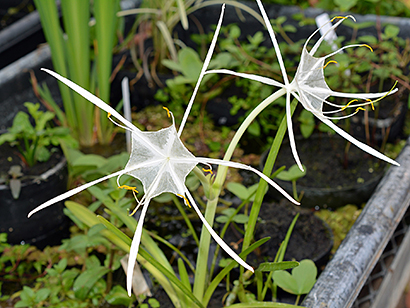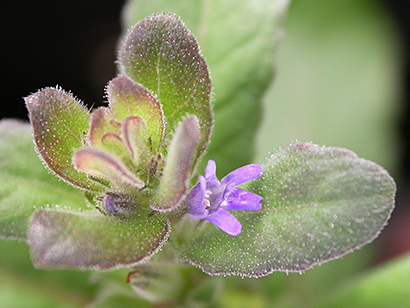Aquarium and Pond Plants of the World (APPW) is a tool to aid in the identification of genera of aquatic and wetland plants used in the aquarium and pond plant trade worldwide. This tool includes an interactive identification key, fact sheets for 270 genera, and over 1,700 images. The first edition of this tool was released back in 2004, when it covered just 125 genera. This 2018 Edition 3 is a major update, with significantly expanded coverage of aquatic plants. See Tool updates for details.
Aquarium and Pond Plants of the World was developed specifically for United States quarantine officials responsible for inspecting shipments and identifying aquatic plants imported or exported for sale in the aquarium and pond plant industry worldwide. Federal, state and local officials conducting domestic surveys within the United States may also find APPW useful, and its worldwide scope allows APPW to be used by quarantine officials in other countries around the world. Additionally, APPW can be used by aquatic plant nursery managers for information about invasive aquatic species, and to aid in identification of plants in their stocks or new acquisitions.


This identification guide aims to cover all genera of freshwater aquatic and wetland plants currently cultivated in the aquarium and pond plant trade around the world. Aquatic plants covered in APPW include both common and uncommon to rarely cultivated genera and species. The number of aquatic plants worldwide is enormous, so APPW attempts to cover all those genera that are cultivated commercially in nurseries around the world as well as in private collections. Also included are some genera not currently cultivated for the trade but grown in association with ornamental ponds.
The term "plant" is used rather broadly here; the taxonomic scope is not restricted to flowering plants (angiosperms). Non-angiosperm aquatic plants covered in APPW include genera of mosses, liverworts, ferns, horsetails, and quillworts. A few commonly encountered macroalgaemacroalgae:
(n) (sing. macroalga) large algae; seaweeds
are also included.
The term "aquatic" is also used broadly to include not just plants that must grow in water (obligate aquatics), but also semi-aquatics, amphibiousamphibious:
(adj) of a plant able to live on land or in water
plants, and some terrestrialterrestrial:
(adj) growing on land as opposed to living in water
plants that can tolerate some inundation (see more about aquatic plants). In short, APPW covers plants that can be grown in an aquarium, wetland or riparianriparian:
(adj) growing by rivers or streams; of, adjacent to, or living on, the banks of a river, lake, pond, etc.
region, or in a pond or pond's marginmargin:
(n) edge; rim
.
At this stage, APPW is limited to freshwater aquatic plants; marine plants (known as seagrasses) such as Zostera, Thalassia, Poseidon, Halophila, etc. are not included, nor are marine macroalgaemacroalgae:
(n) (sing. macroalga) large algae; seaweeds
(e.g., Botryocladia, Halimeda, Haliptilon, Udotea, etc.), with the exception of Caulerpa. Also not included are the various mangrove tree genera. Future versions of APPW may be expanded even further to include these types of marine and estuarine plants.
In choosing genera to include in APPW, an attempt was made to capture a snapshot of the industry — to cover all the freshwater taxa in the trade as of 2017. However, the aquarium and pond plant industry is dynamic; explorations are constantly undertaken to find new aquatic plants suitable for introduction to the industry, while artificial hybrids of already-established species are constantly being produced to generate new, more attractive plants. It is inevitable that genera and species will subsequently enter the trade that are not covered here.